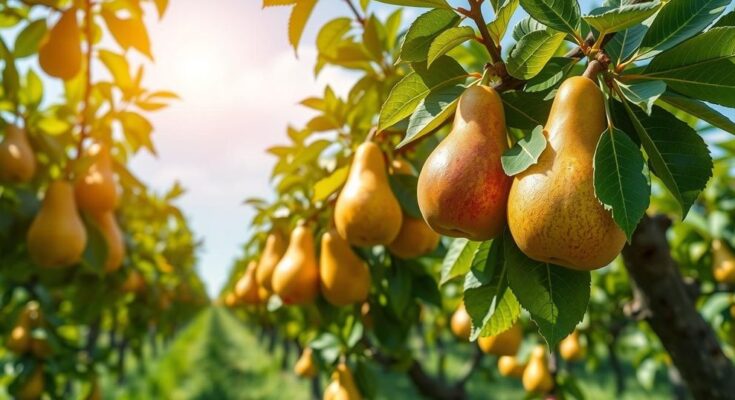In 2024, Argentina maintained a 48% market share in the pear market, buoyed by favorable exchange rates early in the year. However, high internal costs and tensions between producers and exporters emerged. Production exceeded expectations, resulting in significant losses due to unsold inventory. The main markets include Brazil, the U.S., and Europe, where Argentina has lost share due to shifting consumer preferences.
As the 2025 Argentine pear season commences, Betina Ernst, an agronomic engineer and the president of Top Info Marketing S.A., reflects on the performance of the pear industry in 2024. She notes that Argentina, alongside South Africa and Chile, remains a dominant player in the global pear market, with a notable 48% market share in Europe.
In the early months of 2024, the Argentine pear industry capitalized on a favorable exchange rate initiated by the new government. Many exporters accelerated shipments in response to this advantageous position, particularly as inflation surged to 20% per month. However, stabilization of the exchange rate resulted in significant domestic cost increases.
Ernst highlights persistent high internal costs due to the country’s complex labor system and ongoing inflation, exacerbated by hyperinflationary pressures from November to February. The sector experienced tensions between producers and exporters last season, as financial difficulties delayed payments to producers.
Production levels surpassed expectations, leading to a surplus that resulted in substantial quantities of pears remaining in storage. Ernst indicated that some of this surplus was processed while much was discarded, leading to considerable losses.
Regarding market dynamics, Ernst identified Brazil, Russia, the United States, and Europe as key markets for Argentine pears. She expressed concern over Argentina losing significant market share in Europe, particularly due to changing varietal preferences, as the predominant Williams variety is now less favored.
Looking ahead, Ernst anticipates that Argentina’s market share will stabilize, as Chile shifts its focus towards the U.S. due to limited domestic production. While U.S. pear prices remained stable in 2024, European prices initially soared before experiencing a considerable decline.
In summary, the Argentine pear industry faced both opportunities and challenges in 2024, marked by favorable exchange rates early in the year but hindered by high domestic costs and lost market share in Europe. The current landscape indicates a need for adjustments within the industry to sustain its competitive edge, particularly in light of changing consumer preferences.
Original Source: www.freshfruitportal.com




